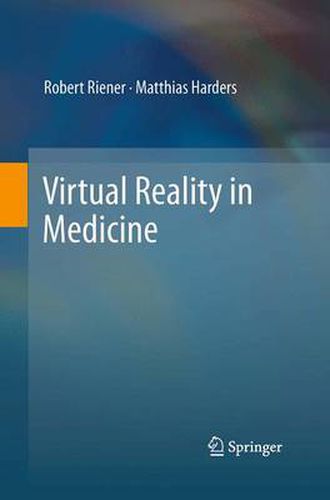Readings Newsletter
Become a Readings Member to make your shopping experience even easier.
Sign in or sign up for free!
You’re not far away from qualifying for FREE standard shipping within Australia
You’ve qualified for FREE standard shipping within Australia
The cart is loading…






Virtual Reality has the potential to provide descriptive and practical information for medical training and therapy while relieving the patient or the physician. Multimodal interactions between the user and the virtual environment facilitate the generation of high-fidelity sensory impressions, by using not only visual and auditory, but also kinesthetic, tactile, and even olfactory feedback modalities. On the basis of the existing physiological constraints, Virtual Reality in Medicine derives the technical requirements and design principles of multimodal input devices, displays, and rendering techniques.
Resulting from a course taught by the authors, Virtual Reality in Medicine presents examples for surgical training, intra-operative augmentation, and rehabilitation that are already in use as well as those currently in development. It is well suited as introductory material for engineering and computer science students, as well as researchers who want to learn more about basic technologies in the area of virtual reality applied to medicine. It also provides a broad overview to non-engineering students as well as clinical users, who desire to learn more about the current state of the art and future applications of this technology.
$9.00 standard shipping within Australia
FREE standard shipping within Australia for orders over $100.00
Express & International shipping calculated at checkout
Virtual Reality has the potential to provide descriptive and practical information for medical training and therapy while relieving the patient or the physician. Multimodal interactions between the user and the virtual environment facilitate the generation of high-fidelity sensory impressions, by using not only visual and auditory, but also kinesthetic, tactile, and even olfactory feedback modalities. On the basis of the existing physiological constraints, Virtual Reality in Medicine derives the technical requirements and design principles of multimodal input devices, displays, and rendering techniques.
Resulting from a course taught by the authors, Virtual Reality in Medicine presents examples for surgical training, intra-operative augmentation, and rehabilitation that are already in use as well as those currently in development. It is well suited as introductory material for engineering and computer science students, as well as researchers who want to learn more about basic technologies in the area of virtual reality applied to medicine. It also provides a broad overview to non-engineering students as well as clinical users, who desire to learn more about the current state of the art and future applications of this technology.